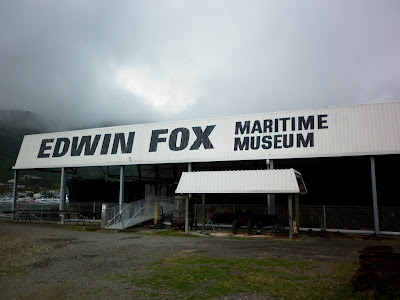Back in
November 2010 I wrote a column about the theory that most people stop buying music by new artists by the age of 26 (at the time I was 27; cue chin-on-hand,
watery-eyed reminiscence about fleeting youth). It certainly rang true for me:
When I was 25 I was still seeking out new-to-me artists and buying their music. That year I got into bands like Beirut, The National, Shearwater, Elbow and Wintersleep. I know because I tracked my listening habits on the website Last.fm. When I went back to Last.fm today I discovered I hadn't logged in since October 2009, which says something in itself about my waning status as a music aficionado.
I vowed to
try a bit harder and got lots of recommendations from readers about what to
listen to. I wrote a follow-up a few months later about my discoveries (not
online unfortunately), but it took time and energy to figure out what I should
be listening to and get a hold of it in ways that balanced my conscience and my
finances.
About twelve months ago I got back in the habit of borrowing CDs from the Wellington City Library. For $1 you can listen to an album for a week – enough time to know if it’s worth investing more in the artist in question. And searching through the racks for new discoveries / re-discoveries will always feel like the ‘right way’ to discover music after all those hours spent in CD stores in my youth.
And then, eight
days ago, Spotify launched in New Zealand. I signed up as soon as I heard the
news and I haven’t looked back.
What is Spotify?
It’s a
music streaming service that offers over 16 million tracks for free, if you’re
willing to put up with a bit of advertising (one or two audio spots every few
songs and some banner ads). You can chose to pay $7.49/month to go without the
ads, or $12.99/month for the Premium service which offers a higher bitrate for
audiophiles and the ability to listen on a variety of portable devices (more on
this later).
You automatically get 48 hours as Premium user when you sign up,
then get 14 days to sign up for a further 30 days of free Premium, which is
nice. I've put off using my free 30 days of Premium so I can get a sense of what the free version is like. At this stage the ads aren’t too annoying. They’re mostly
about different features of Spotify and related apps, so it’s a bit like a
drop-fed user manual.
The glory that is Spotify in anecdote form
 Earlier
this month, in the dark ages P.S. (Pre-Spotify), I was possessed with the desire
to get the Collector’s Edition of Warren Zevon’s 1976 self-titled album, which
featured the original album remastered with a second disc of alternate takes and
demos. There was no chance of me finding a physical CD of this album in Wellington,
and my desire was so strong I couldn’t wait for a copy to be shipped to me. So
I scanned the internet for an illegal torrent to download an illegal pirated
version of the Collector’s Edition illegally. Such was my craving.
Earlier
this month, in the dark ages P.S. (Pre-Spotify), I was possessed with the desire
to get the Collector’s Edition of Warren Zevon’s 1976 self-titled album, which
featured the original album remastered with a second disc of alternate takes and
demos. There was no chance of me finding a physical CD of this album in Wellington,
and my desire was so strong I couldn’t wait for a copy to be shipped to me. So
I scanned the internet for an illegal torrent to download an illegal pirated
version of the Collector’s Edition illegally. Such was my craving.
But I
could not find anywhere to illegally download this album for free. It looked
like I could subscribe to some illegal file sharing sites and illegally
download this one album and presumably get hooked on such illegality while they
bought Auckland mansions with my filthy lucre... but if I was going to spend
$$, it might as well go to the rightful copyright holder.
In short: I
spent my allotted Aimless Internet Trawling hours that day trying to listen to the 1974 demo version of ‘Carmelita’ without
success.
Then
Spotify came along. The first thing I typed in was ‘Warren Zevon’ and within
six seconds I was listening to versions of some of the best Songs Noir ever
written.
No buffering. No blips or glitches.
I was home.
The goods
Spotify
generates income for copyright holders through advertising revenue and
subscription fees. The rate per play is miniscule, but these things add up. It
is a workable business model and a legitimate way for people with
an internet connection to listen to music and reward the artists.
How is
this different from internet radio? How is it this same?!? It’s more like your
iTunes library just underwent the big bang. Those 10,000 tracks you had? Now
you have 1,600% more. You call the shots. It’s as easy to manage as iTunes and
it’s simple to share playlists with friends (or go incognito if you don’t want
people to know about your penchant for Bette Milder).
The urge
to pirate, or support piracy, is now zero. (Okay, so not every track every
recorded is available, but dude, do you have to be that guy?).
Listening
at 90kbps provides decent quality for my purposes (listening while I write about a time before the gramophone was invented) and has very little impact on data usage that I can
see (as opposed to watching NBA TV – I’ve gotten a bit spoilt and can’t handle
the 400kbps feeds anymore... ).
I’ve spent
the last week filling in some gaps in my music listening: artists where I’ve
heard one or two of their albums and always meant to delve deeper (Los Lobos,
Alejandro Escovedo), new albums from bands I quite liked at one stage but sort
of stopped paying attention to (Nada Surf, Willy Mason, Harvey Danger), newish
artists I’ve 'heard of' but not really 'heard' (Kimbra, Boy & Bear) and artists
I’ve never listened to but were recommended for me by an app (The Long Winters,
Fancey).
The outcome: it’s the
most pumped I’ve felt above music since I was 25.
The bad
Okay, so
the ads on the free version can get a bit repetitive if you’re listening
solidly for the whole day (as I do on my ‘writing days’), but it’s not as bad
as the radio.
And it’s a
bit difficult to share playlists with friends when hardly anyone I know has
signed up yet (I’m talking to you, Dan!).
No, the
only thing so far that’s wrong with Spotify
is that listening on an iPad is counted as listening on a mobile device and
therefore requires Premium membership at $12.99 a month. Yes, a tablet is a
mobile device, but I’m a home body. I like to play music on my iPad when I’m
doing the dishes or reading a book in the lounge. I don’t have a lot of songs
on my iPad because of its limited memory, so I hardly ever have the album I
want to listen to at that exact moment. Spotify would solve that (if I was a
Premium member).
I can
listen to ‘French Inhaler [Solo Piano Version]’ on my desktop in my office. But
if I want to listen to the same song while I fold the washing ten metres away I need to drag my
PC down the hall. That seems stoopid. Surely there’s some way to set up a local
Spotify network and, so long as I’m in my own home, I can get the adsy, free
version of Spotify on my iPad? Pretty please? I do listen to your ads, honest.
I promise I’ll buy a coke tomorrow and I can’t wait for the London Olympics.
The Future
More playlist posts. Possibly with Spotify links. Let's just see how the one above works...










